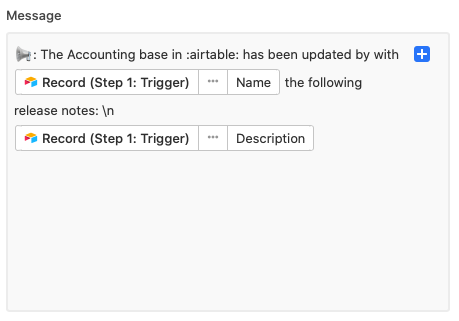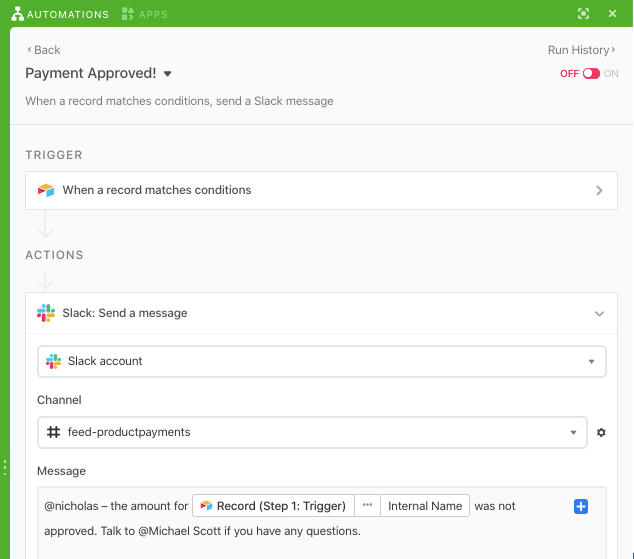I saw elsewhere that Airtable-limited markdown is available for Automations (possibly only for emails? - not clear), but I can’t seem to get the markdown to work for Slack message automations.
:loudspeaker: : The Accounting base in :airtable: has been updated by
[Record (Step 1: Trigger) | Field values | By | Name] with the following release notes:
[Record (Step 1: Trigger) | Field values | Description ]
So that the message in Slack looks like this:
:loudspeaker: : The Accounting base in :airtable: has been updated by frozenforum with the following release notes:
- Created a new Client Companies table
- Converted Client Company field to be a link to Client Companies
- Moved company groups to Client Companies table
But instead, the Slack message looks like this:
:loudspeaker: : The Accounting base in :airtable: has been updated by frozenforumwith the following release notes: 1. Created a new Client Companies table
2. Converted Client Company field to be a link to Client Companies
3. Moved company groups to Client Companies table
I cannot get the new line (hard return) after the colon in release notes, although it does show up in the subsequent lines of the record field.
I also cannot get a space after the Name record field, so it says [name]with.
Is this a bug or am I doing it wrong (or both!)?





 – I get mentioned (because the “@nicholas” matches my Slack name. But Michael wouldn’t get notified.
– I get mentioned (because the “@nicholas” matches my Slack name. But Michael wouldn’t get notified.